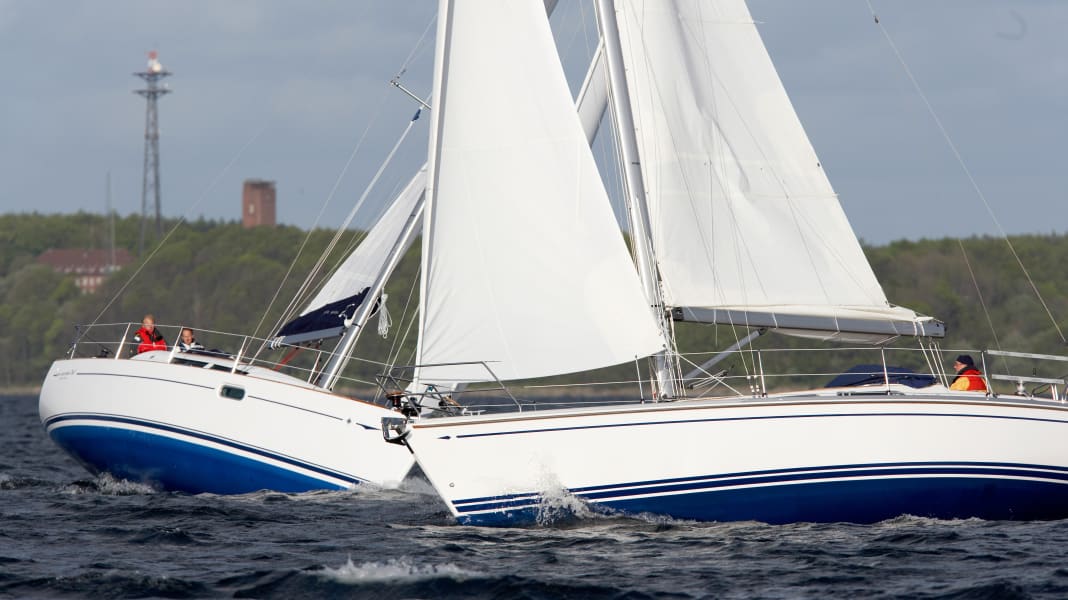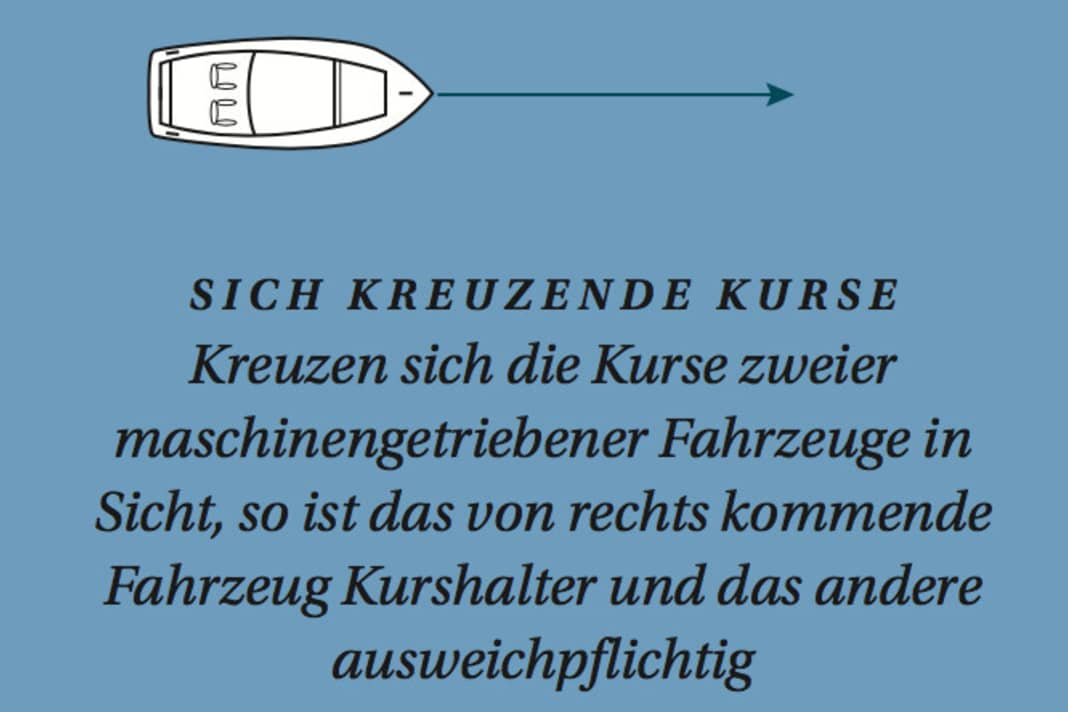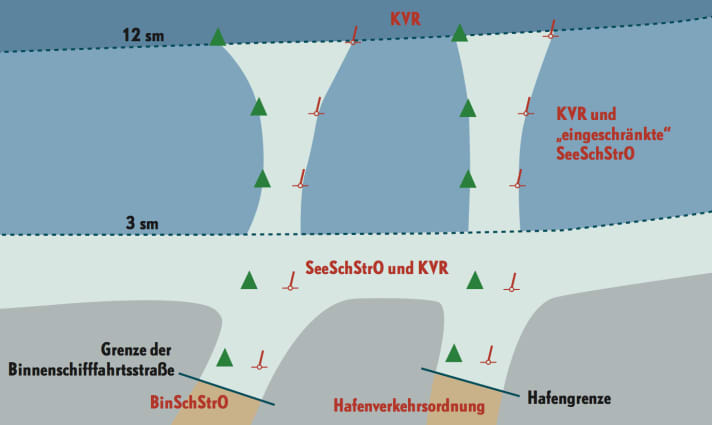Give way rules: Give way and swerve: Sailors need to know these rules

Ships are built to sail the world's oceans. In order to be able to do this accident-free, the maritime states that are members of the International Maritime Organisation of the United Nations (IMO) agreed on collision prevention rules (COLREGs) back in 1972. From the outset, these were intended not only for the high seas, but also and above all for neighbouring waters. The seafaring nations were also to standardise their local regulations on the basis of the COLREGs. This has now been done. Ancient rules of thumb such as "port bow before starboard bow", "lee before windward" or "overtakers must give way" can be found in them. But do these rules always apply without exception?






Sailors know the simple rules of thumb, not least because they are part of the basic repertoire of questions on the sailing licence or boat licence and can be used to defuse the overwhelming majority of dicey situations at sea.
However, anyone who does not take part in daily traffic on the water will find some of the exceptions manifested in the collision prevention regulations and some from local regulations tricky - and above all the answer to the question of when which regulation takes precedence over the other. What applies where? The diagram illustrates the structure of the various "regulatory spheres":

Rule-exception principle
The collision prevention rules assume that when two vessels meet, one must take early and clearly recognisable evasive action, while the other is obliged to maintain a clearly visible course and speed. At the same time, they stipulate that deviations from this rule are permitted if special circumstances require it - for example, because the course of the fairway makes it necessary. The COLREGs also specify what an evasive manoeuvre should look like, namely "early and vigorous" according to Rule 16.
In some places, exceptions to the rules arise from local regulations, as can be seen in the diagram above. In these places, the COLREGs are supplemented by special regulations such as the Seeschifffahrtsstraßen-Ordnung (SeeSchStrO) or the German-Dutch Emsmündung Schifffahrtsordnung (EmsSchO) in the estuary area of the Ems and Leda rivers.
Rule 1 b) of the CPR does stipulate that "such special provisions must comply with these rules as far as possible". However, deviations inevitably arise in a few cases. If there is a conflict between the KVR and an adjacent regulation, the latter applies as the more specific one.
What are "unclear situation" and the "manoeuvre of the last moment"?
Unclear situation
An exception to the principle of "leeward before windward" results from Rule 12 a) (iii) COLREGs: "If a vessel with wind to port sees a vessel to windward and cannot determine with certainty whether the other vessel has the wind to port or starboard, she shall give way to the other vessel."
A corresponding exception to the rule that an overtaking vehicle is obliged to take evasive action arises in unclear situations according to Rule 13 c) KVR: "If a vehicle cannot recognise with certainty whether it is overtaking another vehicle, it must assume this and act accordingly."
Both exceptions reflect the principle that the COLREGs impose on those who are undoubtedly obliged to take evasive action: evasive action must be taken in good time and clearly so that it is recognisable to the course keeper. Otherwise, the course keeper is obliged to act and to recognise the to initiate so-called last-minute manoeuvres.
The manoeuvre of the last moment
Rule 17 a) (ii) COLREGs stipulates that the course keeper is released from his obligation if it becomes clear that the person obliged to give way is not acting appropriately and a collision must be averted. This clarity requires that an attempt is first made to draw the attention of the other party to their obligation to take evasive action, for example by sounding five short notes from the horn.
The most important definitions
High seas
All parts of the sea other than the exclusive economic zone, the territorial sea or the internal waters of a State or the archipelagic waters of an archipelagic State
Coastline
Line that separates the land from the sea. It lies on the mean high tide line.
Baseline
The officially registered low water line along the coast.
Coastal sea
Zone between the coastline and the line measured from the baseline
twelve nautical miles seawards (national territorial waters of a state)
Inland waterways
The waterways for inland navigation listed in the second part of the BinSchStrO
Maritime waterways
- Water areas between the coastline or the seaward limit of inland waterways and a line three nautical miles seaward of the baseline
- The water areas bounded by fairway buoys in the seaward parts of the fairways in the territorial sea
- Parts of the neighbouring inland waterways, such as the Elbe from its mouth to the port of Hamburg
Traffic separation schemes (VTR) Areas with one-way lanes for different directions of travel that channel traffic at bottlenecks or headlands to reduce the risk of collisions. The driving rules in a VTG are defined in the rule 10 KVR
Coastal traffic zones
Areas between traffic separation schemes and the coast. They may not be used by through traffic that can safely navigate the VTG. Vehicles less than 20 metres in length, sailing yachts and fishing vessels, however, may use the coastal traffic zones
The most important evasion rules in the wording
All vehicles
- An overtaking vehicle is obliged to give way. The overtaking vehicle is the one approaching from the sector covered by the rear light.
- A vessel following a narrow channel or fairway must keep to its starboard side.
Sailboats
- A sailing vessel with wind from port is obliged to give way to a sailing vessel with wind from starboard.
- A windward sailing vessel is obliged to give way to a leeward sailing vessel.
- A sailing vessel must give way to unmanoeuvrable vessels, vessels with impaired manoeuvrability and fishing vessels, unless these vessels are overtaking the sailing vessel.
- Sailing vessels using engine power must comply with the evasion rules for engine-powered vessels.
Motor vehicles
- If two craft approach each other on opposite courses with a risk of collision, both must alter course to starboard.
- If the courses of two machine vehicles with a risk of collision cross, "right before left" applies. The rear must be passed.
- A power-driven vessel must give way to unmanoeuvrable, manoeuvring-impaired, fishing and sailing vessels, unless these vessels are overtaking the power-driven vessel.

